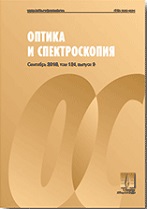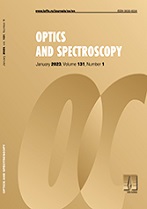|
Spectroscopy of condensed matter
The ν3 band contour formation mechanisms in absorption and Raman spectra of tetrafluoromethane in condensed phases
O. S. Golubkova, T. S. Kataeva, D. N. Shchepkin, T. D. Kolomiitsova
Saint Petersburg State University
Abstract:
In the framework of this investigation, the mechanisms forming the complex contours of the ν3 and ν1+ν3 bands of tetrafluoromethane (CF4) in condensed low-temperature systems – a liquid, a plastic crystal, and a low-temperature solution in liquid Ar – were studied using absorption and Raman spectroscopy. In this study, an experimental Raman spectrum of CF4 in the liquid phase was registered, which was used to obtain the parameters of rotational collapse in the liquid phase, and quantitative data on the band contours in the fundamental region of the spectrum. The main goal of the study is to determine the various mechanism contributions to the formation of the studied band contours such as resonant dipole-dipole interaction, Fermi resonance, and hindered rotation. To solve the problem, the mathematical apparatus of spectral moments was applied. As a result, it was shown that the dominant mechanism of the formation of the contours of the studied band is the resonant dipole-dipole interaction, the values of which were calculated and presented in this article.
Keywords:
Tetrafluoromethane (Carbon tetrafluoride), low-temperature molecular systems, resonant dipole-dipole interaction, LO-TO splitting.
Received: 06.10.2020
Revised: 16.11.2020
Accepted: 18.11.2020
Citation:
O. S. Golubkova, T. S. Kataeva, D. N. Shchepkin, T. D. Kolomiitsova, “The ν3 band contour formation mechanisms in absorption and Raman spectra of tetrafluoromethane in condensed phases”, Optics and Spectroscopy, 129:3 (2021), 282–291; Optics and Spectroscopy, 129:3 (2021), 329–338
Linking options:
https://www.mathnet.ru/eng/os171 https://www.mathnet.ru/eng/os/v129/i3/p282
|


| Statistics & downloads: |
| Abstract page: | 68 | | Full-text PDF : | 14 |
|





 Contact us:
Contact us: Terms of Use
Terms of Use
 Registration to the website
Registration to the website Logotypes
Logotypes









 Citation in format
Citation in format 